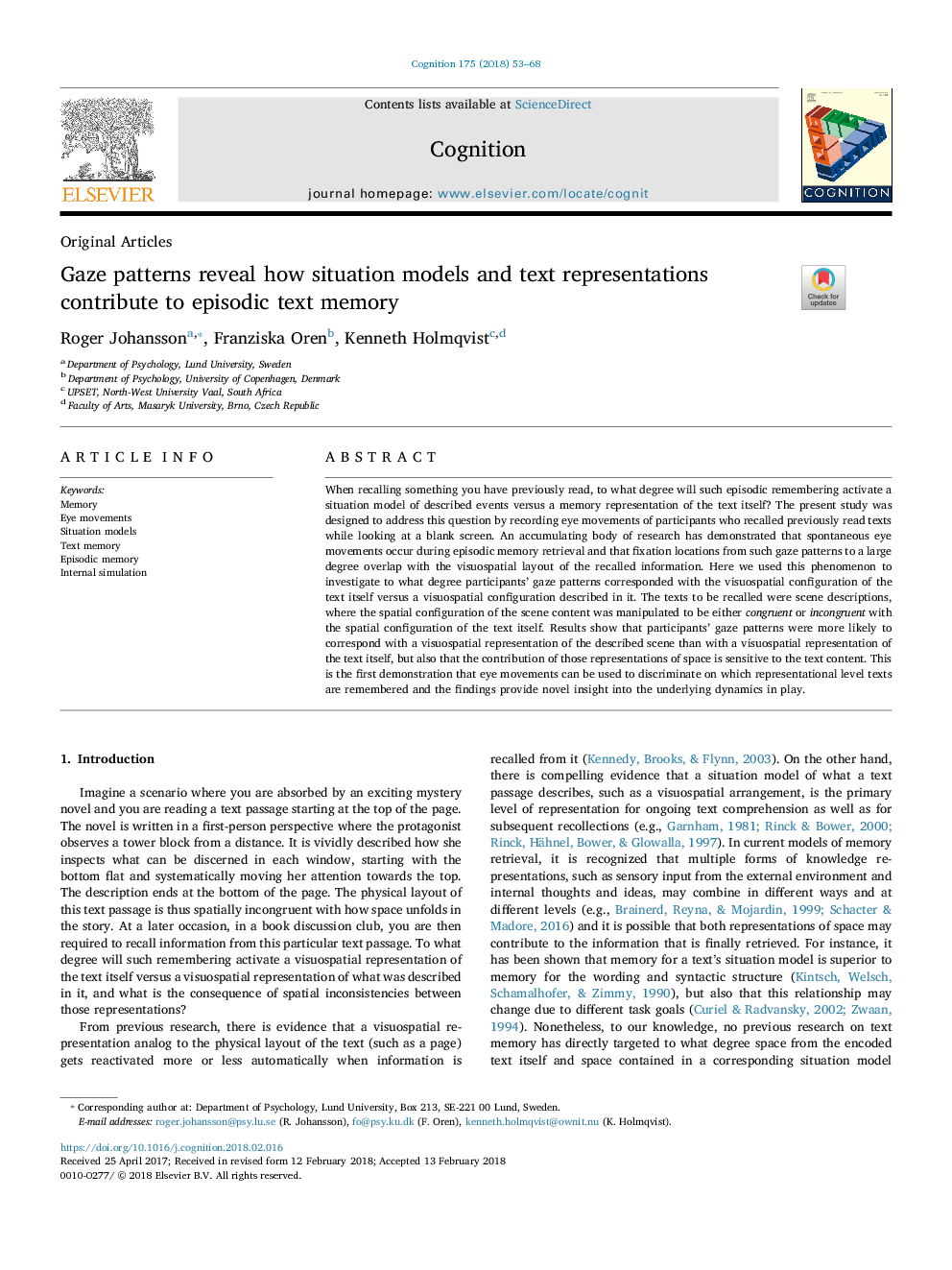ترجمه فارسی عنوان مقاله
الگوهای غرق نشان می دهد که چگونه مدل های وضعیت و نمایش های متن به حافظه متنی اپیزودیک کمک می کنند
عنوان انگلیسی
Gaze patterns reveal how situation models and text representations contribute to episodic text memory
| کد مقاله | سال انتشار | تعداد صفحات مقاله انگلیسی |
|---|---|---|
| 119383 | 2018 | 16 صفحه PDF |
منبع

Publisher : Elsevier - Science Direct (الزویر - ساینس دایرکت)
Journal : Cognition, Volume 175, June 2018, Pages 53-68
ترجمه کلمات کلیدی
حافظه، حرکات چشم، مدل های وضعیت، حافظه متن، حافظه اپیزودیک، شبیه سازی داخلی،
کلمات کلیدی انگلیسی
Memory; Eye movements; Situation models; Text memory; Episodic memory; Internal simulation;

